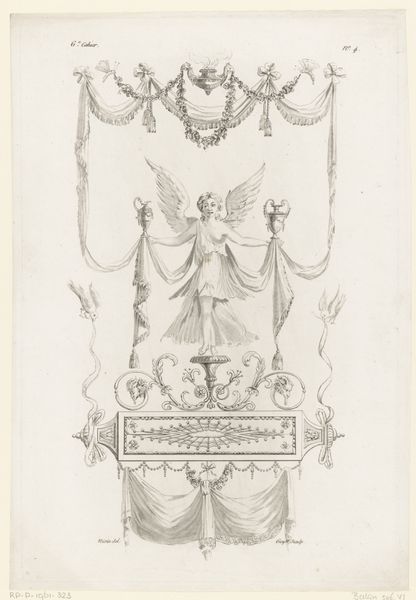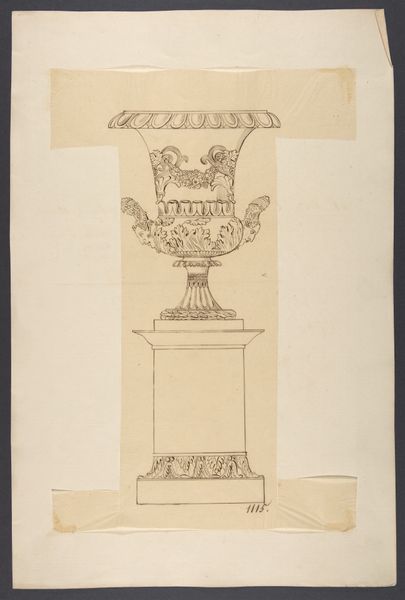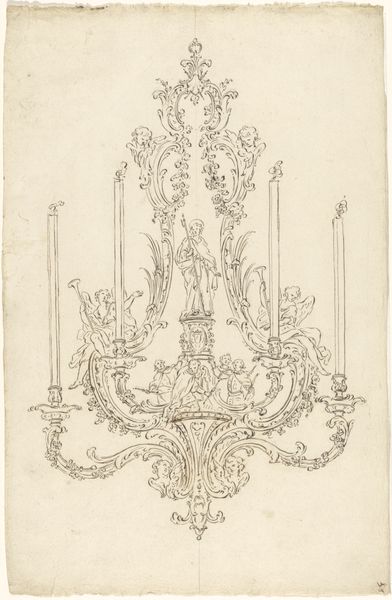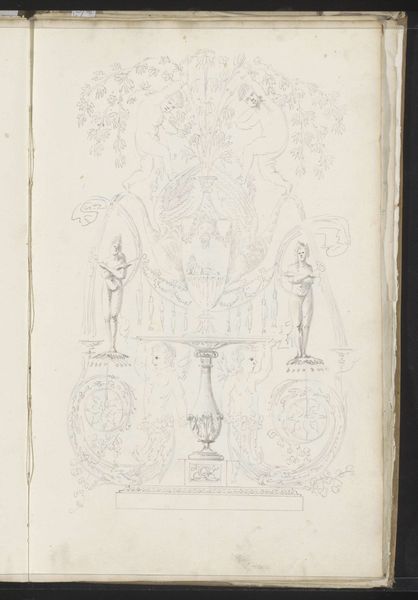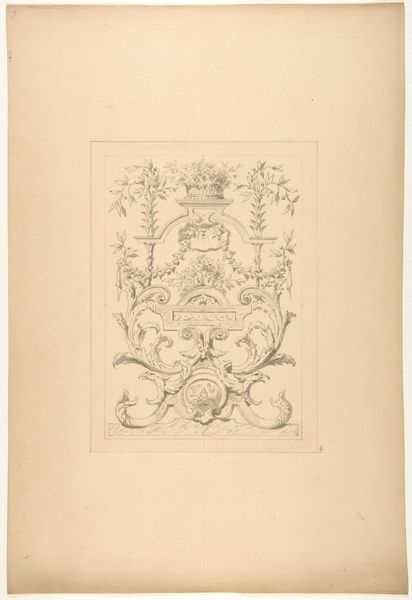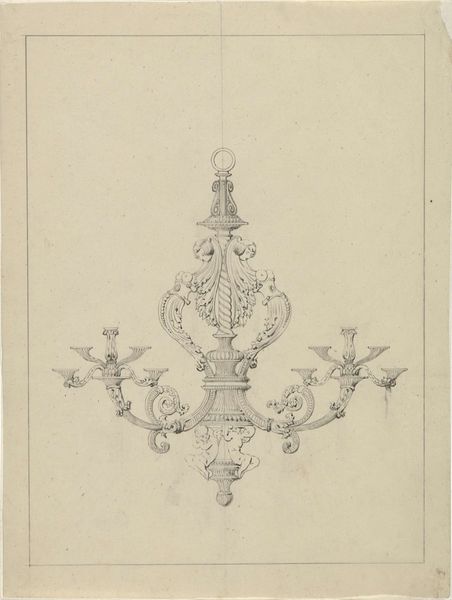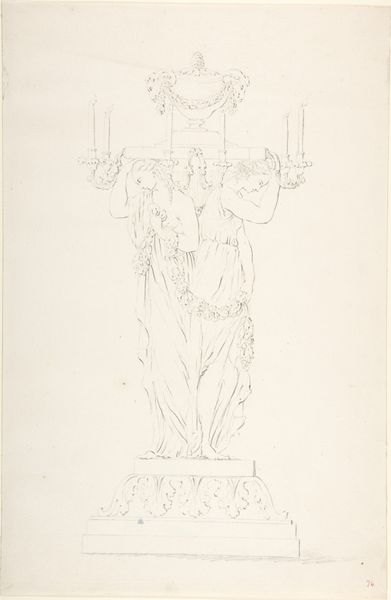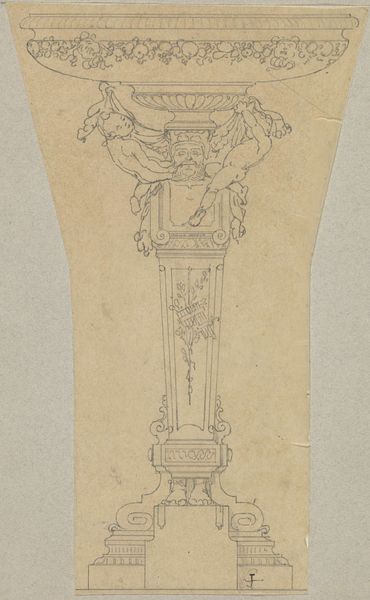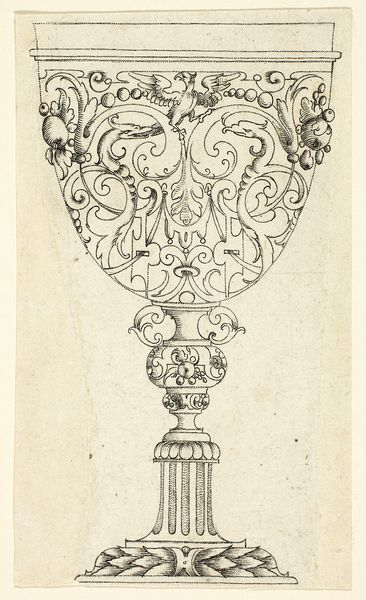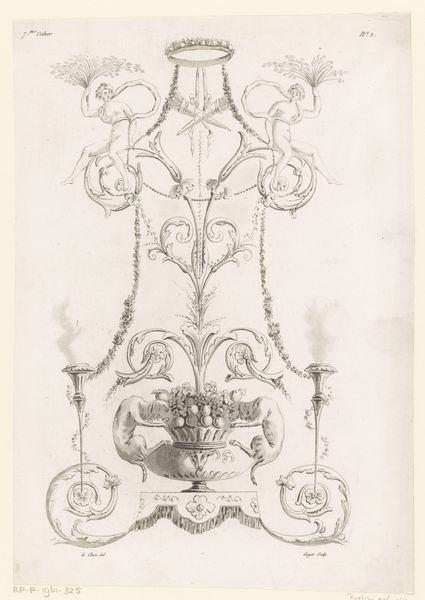
drawing, print, ink
#
drawing
#
ink drawing
# print
#
pen sketch
#
form
#
ink
#
line
#
decorative-art
Dimensions: image: 10 3/8 x 6 5/8 in. (26.3 x 16.8 cm)
Copyright: Public Domain
Editor: This is a nineteenth-century ink drawing, "Design for a Compote Dish," currently held at the Metropolitan Museum of Art. The detailed ornamentation gives it an almost opulent feel, even in this monochrome sketch. What strikes you most about this design? Curator: I'm intrigued by how this design speaks to the complex relationship between art, craft, and social class in the 19th century. The compote dish itself signifies a certain level of bourgeois domesticity, a space where social rituals were performed. What does this elaborate design tell us about the aspirations and values of the people who might have used such an object? Editor: It feels very excessive! Was it common to see such extravagant designs in functional objects? Curator: Exactly! The extravagance raises questions. Was this design meant for production, or was it a more aspirational statement? And who was it designed for? The rising middle class was eager to display wealth and status, often mimicking aristocratic aesthetics. However, this level of ornamentation could also represent a rejection of industrial standardization, a desire to return to individualized craftmanship as a form of resistance against mass production. Editor: So, the design reflects both embracing and rejecting the social structures of the time. Curator: Precisely. It encapsulates the tensions between embracing upward mobility and critiquing the systems that made it possible. Do you think that tension comes across in the artwork itself? Editor: Definitely. Seeing it as more than just a decorative object helps unpack a broader narrative about class and aspiration. Curator: Indeed. It invites us to consider the object's potential role in shaping and reflecting social identities and power dynamics. I think I see it in a new way too!
Comments
No comments
Be the first to comment and join the conversation on the ultimate creative platform.


